I have a small web app for which the back-end is a Flask+SocketIO server. I would like to get some data from an ESP8266 into my app. The most simple way to achieve this I could think of was to have the micro controller connected directly to the back-end.
I am using the timum-viw library with this example code to implement the client on the micro controller.
The problem is that on trying to run the example I get
(12765) accepted ('192.168.0.11', 59848)
192.168.0.11 - - [06/Jul/2020 18:15:25] "GET /socket.io/?transport=websocket HTTP/1.1" 400 122 0.000265
192.168.0.11 - - [06/Jul/2020 18:15:31] code 400, message Bad request syntax ('This is a webSocket client!')
192.168.0.11 - - [06/Jul/2020 18:15:31] "This is a webSocket client!" 400 -
in the terminal window of the dev server. (The IP belongs to the ESP8266.)
I have the same experience with the arduinoWebSockets library and the WebSocketClientSocketIO example.
Can you help me figure out what the problem is?
Update
Everything is hosted locally at this point. I am running the flask dev server with python3 flask_main.py, eventlet is installed.
The minimal code that manifests the problem:
Arduino:
#include <SocketIoClient.h>
#include <Arduino.h>
#include <ESP8266WiFi.h>
#include <ESP8266WiFiMulti.h>
#include <Hash.h>
#define USE_SERIAL Serial
#define SSID_primary "**********"
#define WIFI_PWD_primary "**********"
#define SERVER_IP "192.168.0.7"
#define SERVER_PORT 5005
ESP8266WiFiMulti wifiMulti;
SocketIoClient socketIOClient;
void setup() {
//// set up serial communication
USE_SERIAL.begin(115200);
USE_SERIAL.setDebugOutput(true);
for(uint8_t t = 4; t > 0; t--) {
USE_SERIAL.printf("[SETUP] BOOT WAIT %d...\n", t);
USE_SERIAL.flush();
delay(1000);
}
//// connect to some access point
wifiMulti.addAP(SSID_primary, WIFI_PWD_primary);
while(wifiMulti.run() != WL_CONNECTED) {
delay(500);
USE_SERIAL.print("Looking for WiFi ");
}
USE_SERIAL.printf("Connected to %s\n", WiFi.SSID().c_str());
USE_SERIAL.printf("My local IP address is %s\n", WiFi.localIP().toString().c_str());
//// set up socket communication
socketIOClient.begin(SERVER_IP, SERVER_PORT);
}
void loop() {
socketIOClient.emit("message", "\"hi there :)\"");
socketIOClient.loop();
delay(1000);
}
Flask minimal code:
from flask import Flask, render_template, request
from flask_socketio import SocketIO
app = Flask(__name__)
app.config['SECRET_KEY'] = 'secret!'
socketio = SocketIO(app)
@socketio.on('message')
def handle_message_event(msg):
print('received msg from {} : {}'.format(request.remote_addr, str(msg)))
if __name__ == '__main__':
socketio.run(app, host="0.0.0.0", port=5005, debug=True)
The code below is for debugging only. I do not wish to use them in any form later.
Weirdly enough the Arduino code works fine with a node.js server:
var app = require('express')();
var http = require('http').createServer(app);
var io = require('socket.io')(5005);
io.attach(http, {
pingInterval: 10000,
pingTimeout: 5000,
cookie: false
});
io.on('connection', function (socket) {
console.log('user connected');
socket.on('disconnect', function () {
console.log('user disconnected');
});
socket.on('message', function (msg) {
console.log("message: "+msg);
});
timeout();
});
http.listen();
Could there be something wrong with my Flask? It responds to connections from this:
from socketIO_client import SocketIO, LoggingNamespace
socketIO = SocketIO('localhost', 5005, LoggingNamespace)
while True:
_ = raw_input("> ")
socketIO.emit('message', "hello 2")
But the node server does not!
Update 2
So I went ahead and looked at the communication with wire shark:
Python client & Flask server (works)

The payload of frame 27:
Hypertext Transfer Protocol
GET /socket.io/?EIO=3&transport=websocket&sid=8f47e9a521404b66b23cd985cdee049d HTTP/1.1\r\n
Upgrade: websocket\r\n
Host: localhost:5005\r\n
Origin: http://localhost:5005\r\n
Sec-WebSocket-Key: TQ589ew7EgwDILWb50Eu9Q==\r\n
Sec-WebSocket-Version: 13\r\n
Connection: upgrade\r\n
Connection: keep-alive\r\n
Accept-Encoding: gzip, deflate\r\n
Accept: */*\r\n
User-Agent: python-requests/2.18.4\r\n
\r\n
[Full request URI: http://localhost:5005/socket.io/?EIO=3&transport=websocket&sid=8f47e9a521404b66b23cd985cdee049d]
[HTTP request 1/1]
[Response in frame: 29]
Doing the same with the arduino & flask (does not work)

The payload of frame 34:
Hypertext Transfer Protocol
GET /socket.io/?transport=websocket HTTP/1.1\r\n
Host: 192.168.0.7:5005\r\n
Connection: Upgrade\r\n
Upgrade: websocket\r\n
Sec-WebSocket-Version: 13\r\n
Sec-WebSocket-Key: D9+/7YOHoA8lW7a/0V8vsA==\r\n
Sec-WebSocket-Protocol: arduino\r\n
Origin: file://\r\n
User-Agent: arduino-WebSocket-Client\r\n
\r\n
[Full request URI: http://192.168.0.7:5005/socket.io/?transport=websocket]
[HTTP request 1/1]
[Response in frame: 36]